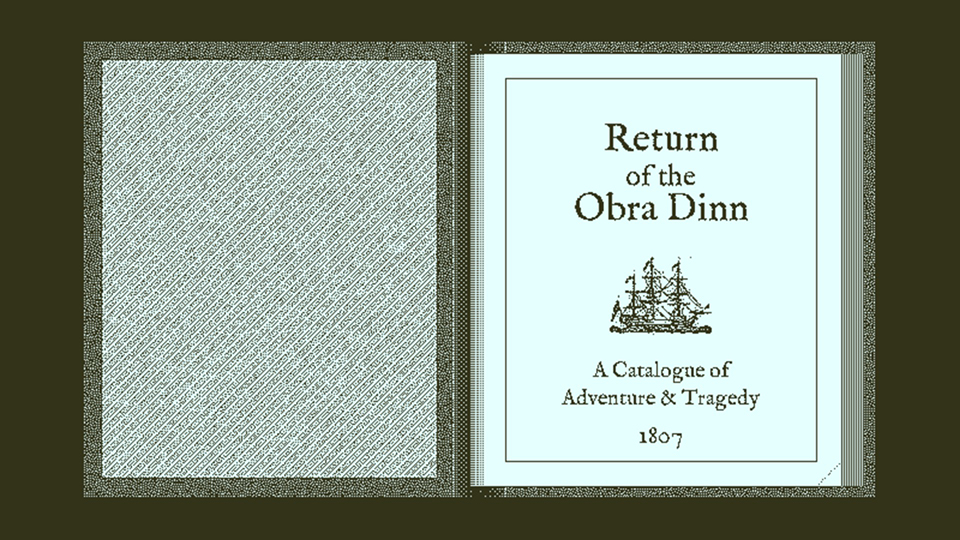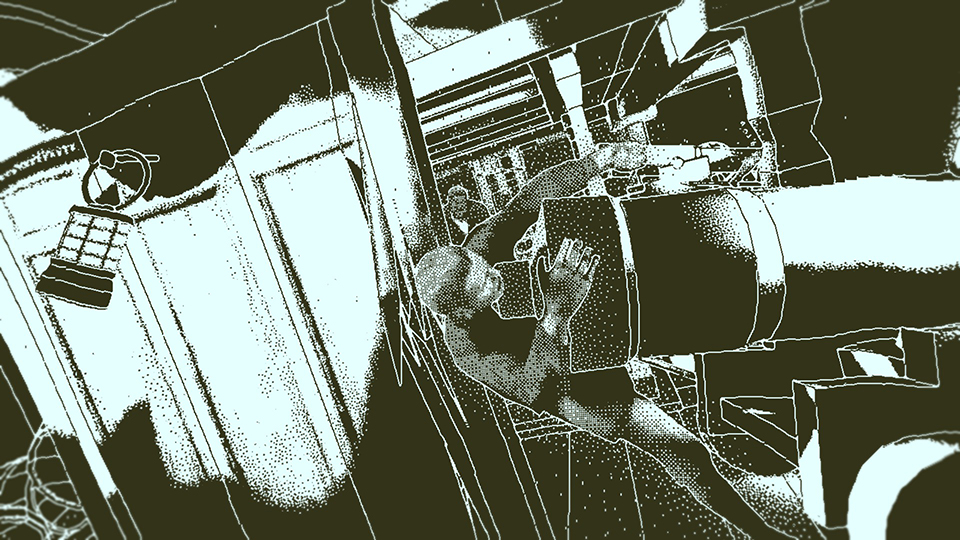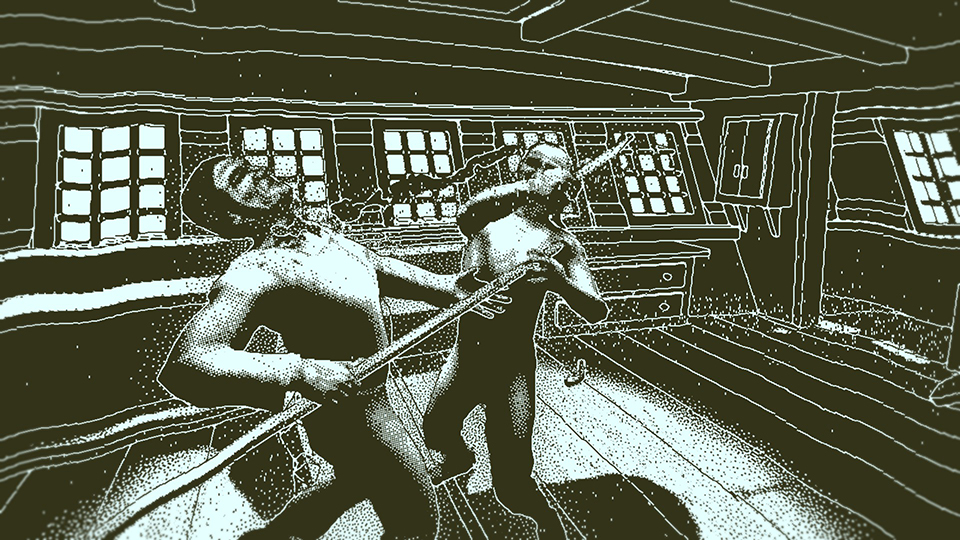Return of the Obra Dinn
Article by: Jax
At its most basic, Return of the Obra Dinn (which I will call Obra Dinn for the sake of brevity) is a game about exploring a Company ship long-thought lost with an art-style that, while trippy at first, emulates retro computer and console games (with the option of choosing which style to go with existing). Analyze Obra Dinn in a more in-depth manner and you’ll find a clever puzzle game that rewards exploration, observation, and deduction.

The titular Obra Dinn is an East Indian Company ship that set sail in 1802 only to go missing for five years. When discovered again in 1807, all 60 voyagers on the ship have been confirmed to have either died or gone missing. Playing as an agent, you are sent to investigate what happened to everybody. Your character is gifted a pocket watch that allows him to time travel back to the instant a crew member/passenger died and a journal to record all of the information in order to learn each person’s fate.
The core gameplay loop for Obra Dinn is as follows: You come across a decomposed body found on the Obra Dinn and open up your pocket watch. This pocket watch allows your character to travel back in time to the instant the person you’re investigating died. Here it is the player’s goal to identify what killed the individual whose corpse you found and who is the deceased. The identities of each character can be learned through dialogue, relationships, and occupations. Some characters will be identified because of a spoken name while others are implied. Correct fates (which are what happened to everybody) will only be recorded once three of them are verified to be right.

Obra Dinn does a good job of dispensing all details the player will need, from providing a chronological order of events to recording every scrap of information discovered, while not acting like a condescending jerk through prompting. All of the correct fates are determined because the player managed to successfully connect two and two together through the use of deduction.
Forward momentum in Obra Dinn is all player driven. New doors open when the player finds a memory where it’s opened, dead bodies will be revealed through exploring memories (and also the only part of Obra Dinn where you are led to new information), and each of the fates can be determined in any order. Player agency is where Obra Dinn succeeds the most because even though the discovery of some bodies is done in a linear fashion, when you can affirm who died at that spot can be done at anytime.

The fun from journeying through the memories of the deceased in Obra Dinn not only comes from testing your detective skills but also piecing together the events of the story. In each memory, you are given the freedom to roam everywhere you are permitted to explore. This includes scenes that, for example, take place below the deck of the death you are currently witnessing. Because of this, and the fact that each memory is chronological within their respective chapter, it is possible to explore, observe what everyone is doing, and figure out how events played out. The enjoyment of the story does not come from the writing itself but rather being able to piece the events together.
That said, exploring through memories isn’t all fun and games. At times it can feel overwhelming to figure out who is who given all the information you are acquired (despite Obra Dinn doing a good job of gradually opening up as you explore). Plus when you enter a dead person’s memory for the first time, the game opts to have you look around for a fixed time before kicking you into the journal. This design choice feels weird not because of how player-driven Obra Dinn is, but because the game still lets the player open the journal and at times the cause of death is pretty evident. The fade to black is done to store the new information, but considering the aforementioned journal that can be opened at any time, I wonder why the new information isn’t recorded automatically when the player connects the dots and opens the journal to confirm what happened.

Also, going back to the dead bodies revealed through memories, there is a cloudy effect that plays once the body is found and it can be revealed on the Obra Dinn. At first it’s kind of cool as you do not know what it is and the effect is brand new, but the more you progress and watch bodies magically appear the more you wish the bodies would be revealed in a quicker manner. It doesn’t break the game but it surely produces a couple seconds of annoyance. With that in mind, all three issues are minor blemishes in an otherwise great package.
Obra Dinn is a triumph on nearly every level. It provides players the satisfaction of both solving the mystery behind what happened to everyone on the titular Obra Dinn and piecing together what transpired, rewards paying attention to details found in each memory no matter how minute, and proves to be a satisfying brain-teaser worth taking.
